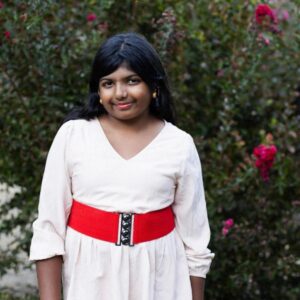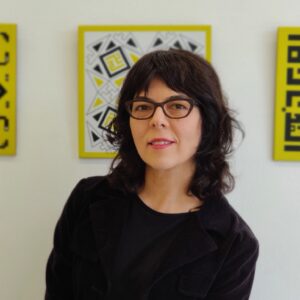Oakland-based artist Connie Zheng, this year’s Dickinson artist-in-residence, gave attendees an in-depth look into her processes and the experiences that inform them during her appearance last week at the Harker Speaker Series.
Zheng began by offering a brief survey of her work, which has included audiovisual installations, stylized maps and documentaries. She has also facilitated community projects in San Francisco’s Chinatown and in classrooms and museums around the Bay Area. “On the broadest level, I would say that my work often deals with the porous interface between memory and culture in place,” she said, adding that she believes this interest is rooted in having grown up experiencing the cultures of both China and the United States.
Since 2019, she has been coordinating the collaborative “Seed Almanac” project, utilizing the idea of seeds “as containers for navigating complicated emotions around environmental crisis and the continued weight of history,” she explained. Participants in the Seed Almanac have created hundreds of small sculptures representing their hopes, fears, wishes and other emotions that may grow in the minds of people that encounter them.
Speaking with Nidhi Gandhi ’11, curatorial and programs associate at the San Jose Museum of Art, Zheng discussed the many facets of her work and what inspires them, including her map projects, which include pieces such as “How to Make a Golden State,” which depicts the history of Asian farmworks in California and how their labor contributed to the development of American agriculture on a global scale.
Although this and other map pieces have been showcased around the Bay Area, Zheng pointed out that she didn’t consider them therefore finished. “Even when it’s being displayed, it’s not necessarily final,” she said, noting the importance of recognizing that “mapping, too, is a process, like a method of wayfinding, and to really emphasize that these maps are sort of just one endpoint in this ongoing process of continuing to learn how to relate to the place.”
During her residency, Zheng worked in classes with Harker students, who participated in a localized Seed Almanac project in which they created seeds and placed them around their campus. Upper school students also collaborated on a map of their campus, adding touches that reflected their thoughts, feelings and memories of specific areas.
Zheng reflected positively on the experience. “It’s been amazing. It’s been so much fun,” she said. “The students here are incredible, and so smart and funny.” The artist, who is more accustomed to working with university students, confessed to being somewhat nervous about how her concepts would carry over to middle and upper school classrooms, but was appreciative of the support she received from Harker teachers. “The support that I received from the faculty has been so incredible,” Zheng said, “Everyone assured me … the students would get it. I actually ran it quite similarly to how I run it in colleges”
Zheng’s talk will be available in its entirety at Harker’s YouTube channel in the near future.












